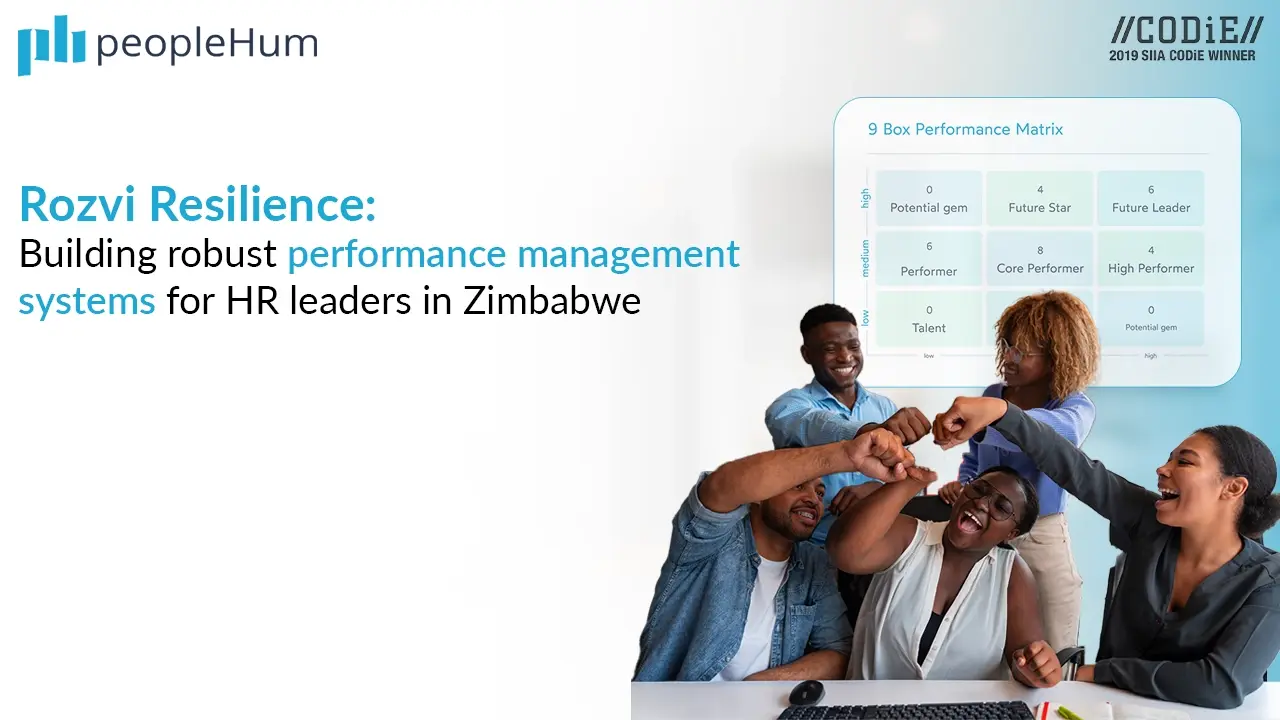Objctives are powerful and necessary. They help focus individual and collective energies towards achieving desirable outcomes. Even businesses rely on objectives to achieve results. These could relate to revenue, profitability, human resources, product development, marketing, or sales.
There’s two outcomes of goal-setting for SMEs - they either exceed their objectives and head in the right direction, and if they aren’t heading in the right direction, the businesses move forward by taking up corrective measures.
However, the obvious question arises - How do SMEs achieve their goals? A rising startup may have clear goals, but may not know the methodology to use to achieve them. To achieve a goal, you need a framework. This article by Atlassian spells out eight of the most common strategic planning frameworks that can aid SMEs to develop different aspects of their business’ goals.
An OKR is one such strategy. OKRs have been used by leading organizations like Google, Adobe, and Netflix for years now. The objective of using Objectives and key results is to help keep a close eye on progress and increase employee-company vision alignment. So, if SMEs are looking to improve performance at ever level of their business, then OKRs may be the way to make it happen.
What are OKRs?
OKRs are useful for business of all sizes, but they can be particularly useful for boosting growth in small businesses. The development of OKRs is attributed to Andrew Grove, former President and CEO of Intel. Also known as the “Father of OKRs”, Grove introduced this approach at Intel as a method to achieve measurable objectives through company-wide alignment and transparency.
Like a performance management framework, OKRs can be assigned to an individual, a team, or a company. Breaking down OKRs, they can be divided into three components:
Objectives
Key Results
Scoring

Objectives
Objectives are high-level goals that the business wants to achieve. They define the destination the business wants to reach.
For example, an objective for a small business such as a restaurant would be: Be a second home for the people in our neighbourhood.
An objective such as this sets the destination the company wants to go and would be aligned to broader, overarching vision of helping the company grow from a small business to a medium-sized one.
Also Read: How is HR in small businesses different from large companies?
Key Results
Key Results are how a business measures its progress. They are the desirable outcomes of the efforts company undertakes to achieve an objective. They are the results or the sum of the tasks that individuals in the team to each week or month.
For example, the key results that may help small restaurant with an aspirational objective such as the one above, could be achieved that by seeing them as follows:
KR1 - turn 30% of guests to return customers
KR2 - Sell out an event or holiday with sentimental value
KR3 - Hand out 100 “neighbourhood discount” coupons per week
KR4 - 4 “neighbourhood favourites” items on the menu per season
Key results brings the SME closer to its objective. If the objective is the destination, the key results shows the direction of how to get there. By crossing the mile-marks, i.e. achieving the key results, an SME will certainly be moving in the right direction towards achieving its objectives.
Scoring
The third and major component of OKRs is scoring. In order for an SME to know how well it is doing, it needs to know how they have scored on each key result.
For instance, Google often uses OKRs to set objectives and track progress. They use a scale of 0 to 1, and measure progress in increments of 0.1.
- A score of 0.3 means the business’s efforts missed the marks by quite a lot.
- A score between 0.6 and 0.7 is the sweet spot. The business didn’t meet its target but is making great progress towards it.
- A score of 1 means that the business has hit its target.
OKRs can be used as a goal-setting framework for startups and SMEs as well. However, they are not synonymous with employee evaluations. Instead, they enable teams to focus on bigger objectives and accomplish more than they thought was possible, even if they don’t attain the goal.
Can OKRs work for SMEs?
When talking about OKRs, it’s common to mention its successful usage by massive companies like Google, Adobe, Intel or Netflix. A list as prestigious as this could discourage SMEs interested in implementing OKRs. If you’re a small business owner, you may have pondered questions like,“Do OKRs need a great number of resources to implement?”, “Do they only work for organizations with elaborate structures and processes?”, “Can OKRs work for startups?”, and so on.
To find some answers for these questions, let’s take look at some SME objectives:
- Small online shop - Objective: increase their e-commerce business valuation this year.
- Local grocery store - Objective: Get more repeat customers and increase customer loyalty.
- Restaurant - Objective: Get consistent 5-star ratings on restaurant rating apps.
Now, some objectives of large scale businesses operating in the same industries as the examples above:
- Amazon - Objective: Sell more merchandise this year.
- Big Basket - Objective: Get more repeat customers and increase customer loyalty.
- Dominos - Objective: Get consistent 5-star ratings on restaurant rating apps.
Notice the similarities?
These examples just simply show us that no matter the size of the business, each and every one of them has a singular goal for existing at its core. And OKRs are tools that are equipped to help businesses of any size to achieve their goals.
However, the manner in which OKRs can be executed for SMEs differs from OKRs for large scale enterprises. Large businesses have OKRs for different departments, an although they may have organizational objectives, they are usually designed to cascade down to the entire organization.
For an SME, the best approach is to set business-wide OKRs to keep track of everything. Such an approach would make it easy for everyone to work towards the same objectives instead of fragmenting SME’s limited resources.

Benefits of using OKRs for small businesses
OKRs are a powerful motivator for organisations to achieve greater success. It helps build concrete missions, encourages greater employee engagement, and overall sets the pay towards the ultimate mission of the company. Here are some benefits of OKRs to inspire SME’s to take the leap:
1. Alignment to corporate goals
The alignment of an employee’s work to the objectives of the department, and with affect to the company is very important. Sharing objectives throughout the organization leads to greater transparency, so, every employee is connected and invested in the business.
Day-to-day employee activities are aligned with company vision, and consequently, employees remain more focused on what matters most to the business. Companies with highly-aligned employees are over twice as likely to be top performers.
2. Track progress regularly
OKRs are generally accompanied by specific timelines and are reviewed on a weekly or biweekly basis. Ongoing discussions keeps teams focused on progress, allows for flexibility and adapt their efforts at the right time.
Regular check-ins and status updates ensures that every individual in the organization remains focused on the big picture. Therefore, tracking progress from output to outcome makes OKRs the popular choice.
3. Increased focus & productivity
Setting an actionable goal with key results helps businesses nurture focus, efficiency, and productivity. OKRs help employees stay focused and enter prioritise their time on what matters he most. By building strategic OKRs, executives and managers give their teams a compass to follow and a benchmark to perform against.
4. Better transparency & teamwork
OKRs drive employees and their leaders to work cohesively as a unit to achieve larger goals. When team members know each other’s priorities and plans, they are more in sync, work with better transparency, and for together to ensure the required work gets done in time.
5. Elevated employee engagement
We know how crucial employee engagement is to organizational success. OKRs allows employees to se how their efforts directly impact the company’s mission and vision, thus giving them a sense of purpose and direction for their efforts. This makes them feel more committed, motivated, and engaged with their work.
We’ve briefly shown you how OKRs can help boost the efficiency of SMEs. How about we get started with creating OKRs for small businesses?
How to create OKRs for SMEs in 7 easy steps
Step 1 - Lay the foundation
Teach your team about OKR and what they mean for the business and for professional growth. Take some time to learn the concept, terminology and scoring system.
Step 2 - Build objectives
Build upon the foundation with the question, “What is the most significant impact we need to make this month.quarter/year?” Brainstorm and whiteboard these ideas, and narrow them down to 2 to 5 aspirational objectives.
Step 3 - Define key results
Key results signal how your SME is advancing towards the company’s objectives. They are not tasks, but specific outcomes or results.
Step 4 - Be aspirational
OKRs are meant to be ambitious, and like it or not, have to make everyone involved uncomfortable enough to motivate themselves to achieve those goals. However, aspirations mustn’t be ambiguous, and you must ensure that there are specific target numbers.
Step 5 - Design the next steps
Now that you’ve design OKRs, you need to ensure that all dependencies are addressed before executing your vision. If you work with external agents, you need to communicate your OKRs to the and ensure that all elements are aligned. Once all is addressed, it’s time for discussing strategies with the team on what the next steps will be.
Step 6 - Weekly/Monthly check-ins
It’s highly recommended to check-in on the progress towards accomplishing business objectives. During these check-ins, identify issues that hinder the the progress towards getting a good score.
Step 7 - Review and scoring
The final step is to step back, and review and score your OKRs. How well did the business perform? Are the objectives challenging enough? Were the OKRs followed? Did they have a significant impact on the business?
Once you review and score at step 7, it should help you design a new set of OKRs for the small business, but with better insights and better focus.
How to set OKRs for small businesses with peopleHum
The OKRs for your small business don’t have to set on whiteboard for it to eventually be rubbed away and forgotten. With peopleHum’s cloud-based OKR system, you can align your team with the organisational objectives and achieve success. It’s dashboard gives a comprehensive view of objectives owned across the organization and also gives users a quick way to check-in.
Create objectives and relevant key results, check in on progress, and ensure that effort aligns with expectations. It’s easy to use, and designed to help your small business succeed in its ambitious ventures.































.jpg)



.webp)














